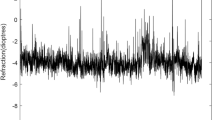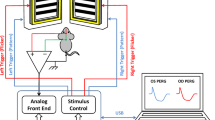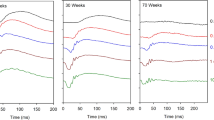Abstract
ALTHOUGH the technique of monocular occlusion has long been used by ophthalmologists1 in the therapeutic treatment of such conditions as strabismus (squint) and amblyopia, particularly in young children, little experimental work has been directed at determining the nature of visual sensitivity in the nonoccluded eye. Will this eye show a compensatory improvement in acuity as a result of prolonged disuse of the other eye, and, if it does, will this effect dissipate with time following removal of the occluding eye patch? In an attempt to throw some light on this important applied and theoretical problem we have recently conducted a series of studies2 in which the critical flicker fusion frequency (CFF), a measure of temporal visual acuity, was determined in adult subjects, with normal vision, at periodic intervals during 7 days of monocular deprivation. No significant changes in the CFF of the occluded eye were observed. The temporal pattern of the nonoccluded eye, however, was characterized by an initial decrease in the CFF at 3 and 6 h (that is, poorer acuity), a reversal to the pre-experimental baseline at 9 h, and then a negatively accelerating improvement in performance as a function of monocular deprivation duration. This temporal pattern occurred regardless of whether the dominant or nondominant (weak) eye was occluded. Furthermore, these results were only obtained if a black rather than a white translucent eye patch was used, a finding which indicates that our monocular phenomenon was produced by an absence of visual stimulation per se and not by an absence of pattern vision.
This is a preview of subscription content, access via your institution
Access options
Subscribe to this journal
Receive 51 print issues and online access
$199.00 per year
only $3.90 per issue
Buy this article
- Purchase on Springer Link
- Instant access to full article PDF
Prices may be subject to local taxes which are calculated during checkout
Similar content being viewed by others
References
Adler, F. M., Textbook of Ophthalmology (Saunders, New York, 1962); Lyle, T. K., and Wyber, K. C., Lyle and Jackson's Practical Orthoptics in the Treatment of Squint (Lewis, London, 1967).
Bross, M., and Zubek, J. P., Canad. J. Psychol., 26, 42 (1972); Zubek, J. P., and Bross, M., Science, 176, 1045 (1972); Zubek, J. P., and Bross, M., Interamer. J. Psychol. (in the press).
Myers, J. L., Fundamentals of Experimental Design (Allyn and Bacon, Boston, 1966).
Sharpless, S. K., Ann. Rev. Physiol., 26, 357 (1964).
Cannon, W. B., and Rosenblueth, A., The Supersensitivity of Denervated Structures (Macmillan, New York, 1949); Stavraky, G. W., Supersensitivity following Lesions of the Nervous System (University of Toronto Press, Toronto, 1961).
Author information
Authors and Affiliations
Rights and permissions
About this article
Cite this article
ZUBEK, J., BROSS, M. Changes in Critical Flicker Frequency during and after Fourteen Days of Monocular Deprivation. Nature 241, 288–290 (1973). https://doi.org/10.1038/241288a0
Received:
Revised:
Issue Date:
DOI: https://doi.org/10.1038/241288a0
Comments
By submitting a comment you agree to abide by our Terms and Community Guidelines. If you find something abusive or that does not comply with our terms or guidelines please flag it as inappropriate.



